Subtotal: $
Checkout-

Ramadan
-

Poem: Ordinary Saints
-

Singing God’s Grandeur
-

Benedict Option: Signs of the Times
-

Forum: Even If He’s Wrong
-

Forum: Not the Full Story
-

Forum: The Pentecost Option
-

Forum: Not Optional
-

Editors’ Picks Issue 13
-

Fannie Lou Hamer
-

Nature Is Your Church?
-

Afternoon at the Jerome
-

The Real World to the Rescue
-

Readers Respond Issue 13
-

Family and Friends Issue 13
-

Not a Saint, but a Prophet
-

Inwardness in a Distracted Age
-

On Inner Detachment
-

Activist Mystics
-

Marguerite Porete: The Noble Virtue of Charity
-

Simone Weil: An Encounter
-

Waiting in Silence
-

Saving Silence
-

Poem: A Lens
-

Giving God Our Attention
-

An Impossible Hope

Text by Shana Burleson
He can’t change the world, he says, but is “just the chronicler of our times.” Artist Pawel Kuczynski was born in 1976 in communist-ruled Szczecin, Poland, just two months after widespread, violent protests rocked the country, opening the doors to organized opposition of the country’s communist regime. During his early childhood, resistance groups sprang up throughout Poland, publishing clandestine newspapers, establishing trade unions, holding secret university classes, and denouncing human rights violations.
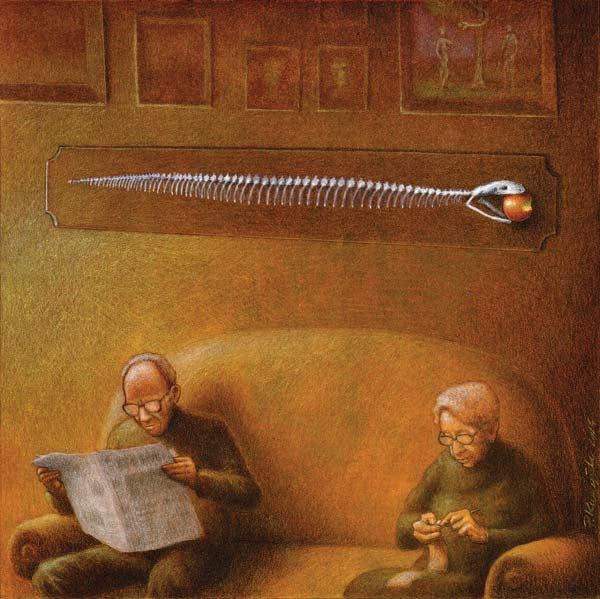
Adam and Eve, 2014 Images reproduced by permission of Pawel Kuczynski.
The 1978 election of Pope John Paul II, formerly the Polish archbishop of Kraków, focused and united Poles; the new pope subtly encouraged resistance to the regime by encouraging the formation of an “alternative Poland” of social organizations independent of the communist regime. Kuczynski was five years old when martial law was imposed nationwide, leading to the imprisonment and mistreatment of thousands of Polish civilians in a violent crackdown that aimed to demoralize workers’ unions and sap the will of members of the resistance.
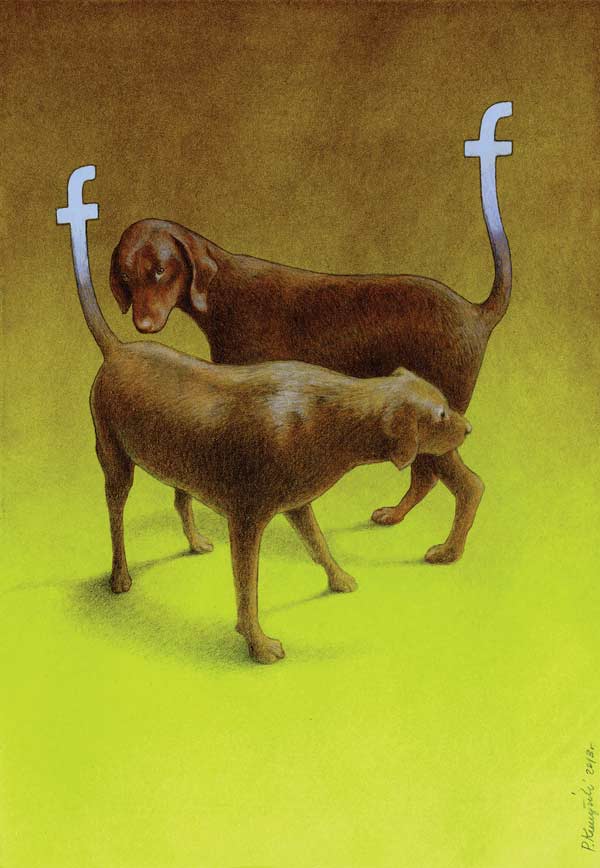
Faces, 2013
But something else happened instead. In 1982, playful graffiti representing dwarves started appearing on walls where anti-communist slogans had been painted over by city governments. It was the beginning of a new phase of protest. The so-called Orange Alternative was a student movement that focused on absurdist art as a means of dissent. From painted dwarves to public gatherings, the movement brought to the Polish anti-communist underground a sense of play, of humor, of the carnivalesque – and it lasted until the Berlin Wall fell in 1989. Two years later, in October 1991, Poland held its first free parliamentary elections since the 1920s. Kuczynski was fifteen.
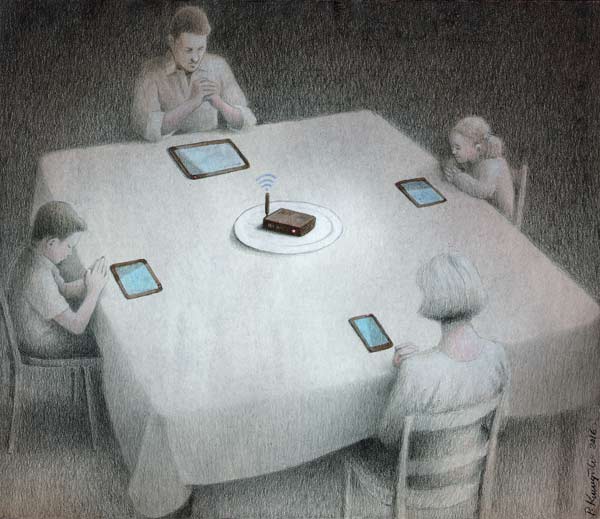
Dinner, 2016
After secondary school, Kuczynski, who had always enjoyed drawing, specialized in graphics at the Academy of Fine Arts in Poznań. He painted portraits at parties, copied paintings of the masters, and painted apartment interiors. Then, in 2004, a friend encouraged him to enter a cartoon competition. He drew his first satirical illustration and was hooked. Today, his thought-provoking art is recognized worldwide; his work has received over one hundred and thirty awards.
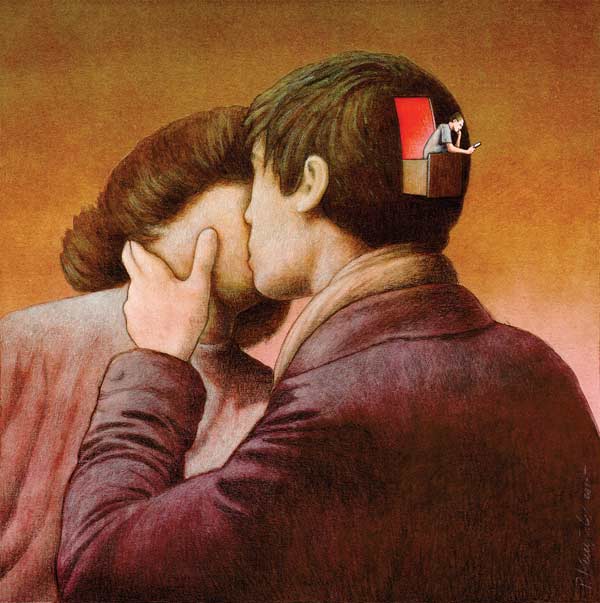
Love, Mind, and Phone, 2017
Kuczynski says he draws inspiration from his peers and colleagues as well as from the work of the old masters. He loves the theatrical lighting of Caravaggio’s paintings, and often plays with light and shadows in his own works to create heightened drama.
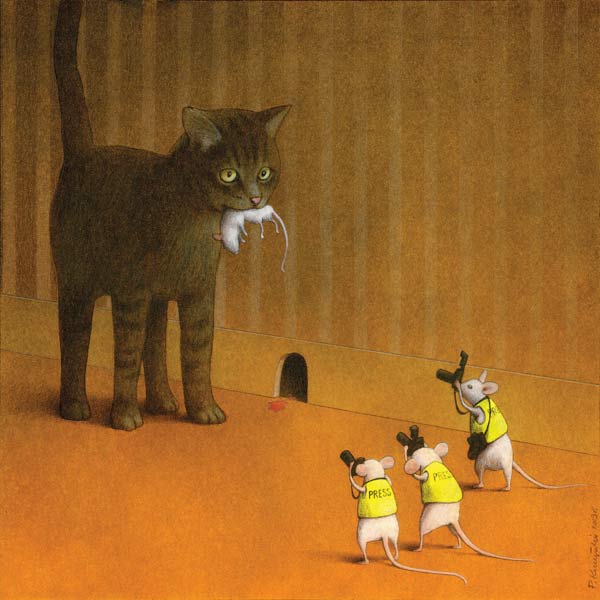
Press, 2013
As for subject matter, Kuczynski says that he doesn’t have to look far – today’s “absurd realities” offer plenty of material. Memories of the political uproar during his childhood motivate him to confront the apathy he sees in today’s young people despite the troubling issues they face. Combining humor with frustration over Poland’s political situation and global issues such as poverty, war, and racial division, he uses visual metaphors to bring out uncomfortable truths.
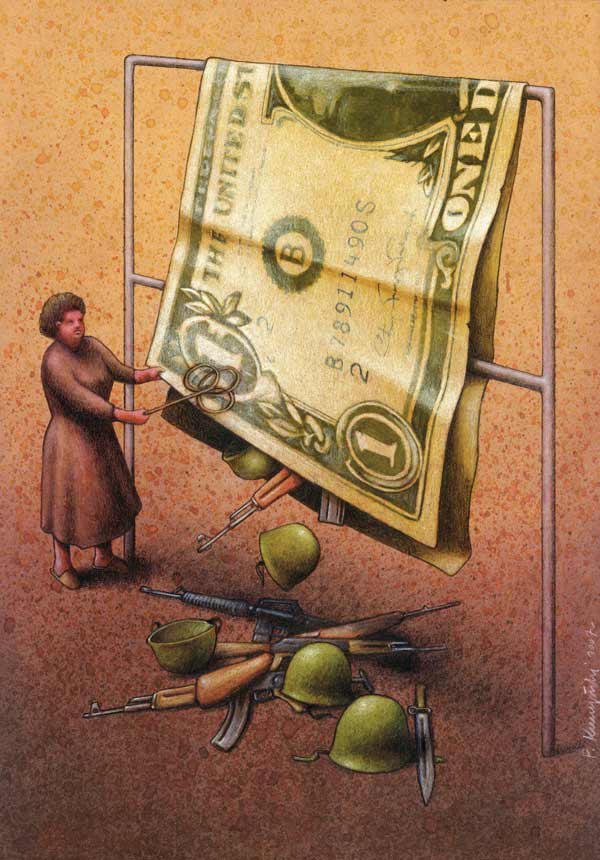
Money, 2007
He has focused in particular on the way that our addiction to technology – and especially to social media – deforms human relationships and disrupts the inner life. His work shows a fierce commitment to the importance of that space in each of us that totalitarian regimes like the communism of his childhood had sought to colonize.
He’s been called a surrealist. But Kuczynski demurs. He is, he says, “a realistic illustrator … of our surreal times.”
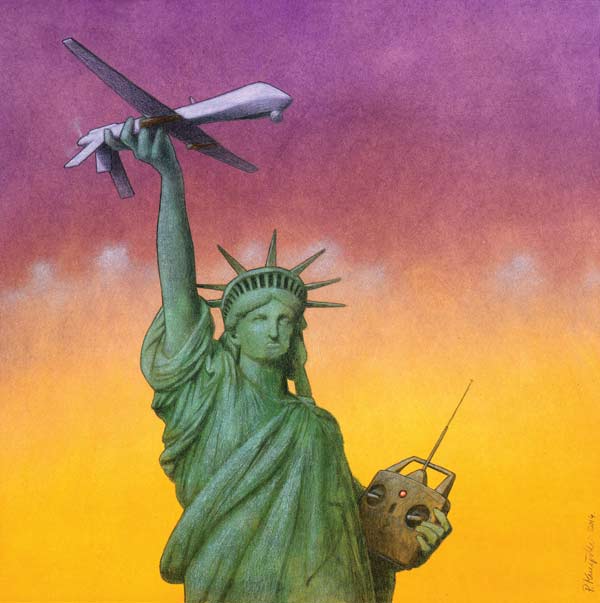
Drone, 2014
Shana Burleson is an editor at Plough.
Already a subscriber? Sign in
Try 3 months of unlimited access. Start your FREE TRIAL today. Cancel anytime.




































